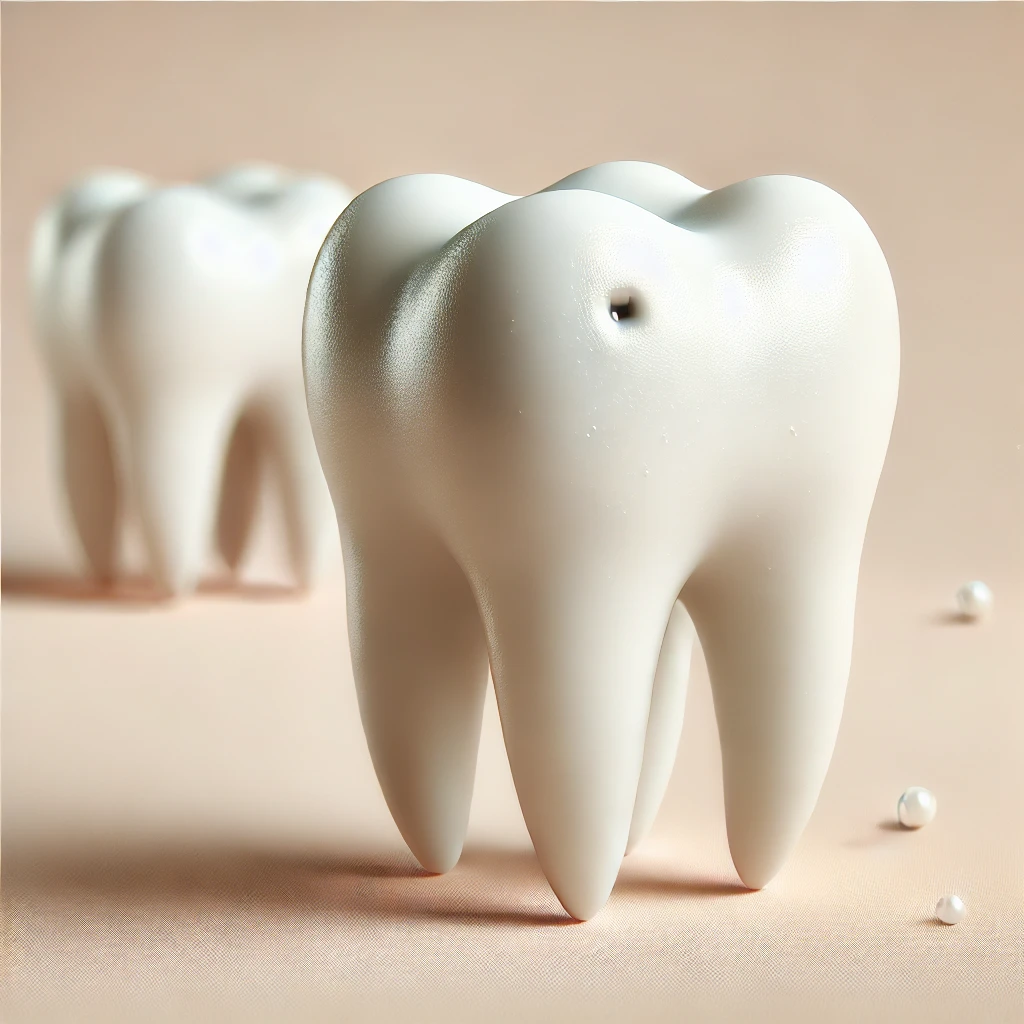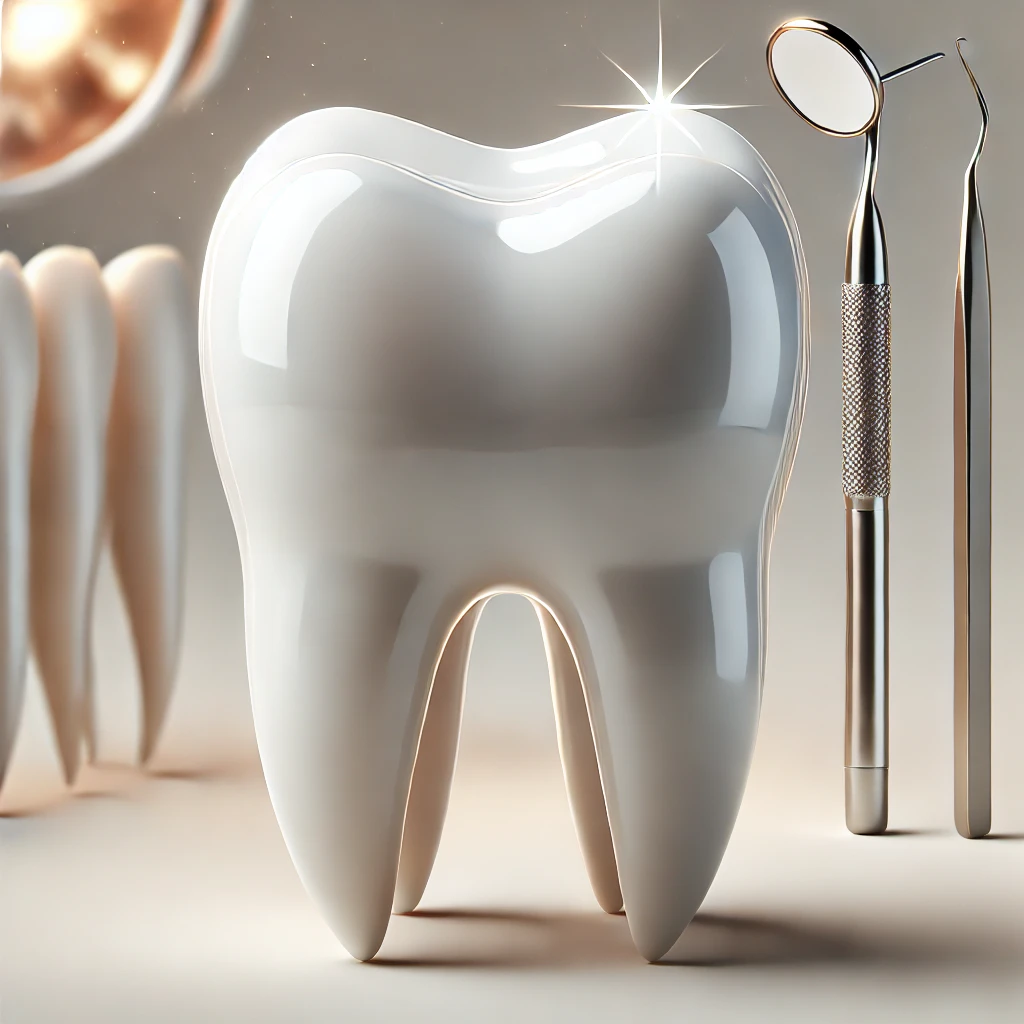Understanding Tooth Decay, Tooth Enamel, and Cavities
Tooth decay, commonly referred to as dental caries, is a progressive bacterial infection that affects the structure of the teeth. It begins with the demineralization of tooth enamel, the hard outer surface of the tooth, and can lead to the formation of cavities if left untreated. Cavities form on teeth by eroding enamel and eventually affecting the dentin. Various cavity symptoms, such as pain sensitivity and spots on teeth, indicate the presence of cavities forming and should prompt timely dental care.
Dental cavities are among the most prevalent dental issues, impacting individuals of all ages. Without proper care, they can result in more severe complications such as infections, abscesses, or even tooth loss. According to the Centers for Disease Control and Prevention (CDC), approximately 60% of teenagers between the ages of 12 and 19 have experienced at least one cavity in their permanent teeth.
Tooth decay is not just a minor inconvenience. It’s a serious bacterial infection that affects the hard tissues of our teeth, including the enamel, dentin, and cementum. Understanding how cavities develop and recognizing their symptoms early is crucial to maintaining oral health and preventing long-term dental problems.
What is Tooth Decay?
Tooth decay is a gradual process driven by the accumulation of dental plaque and the acidic byproducts of bacteria in the mouth. When we consume sugary or starchy foods, bacteria feed on these particles and produce acids that attack the tooth’s enamel. This process leads to the erosion of enamel, and as the enamel weakens, a cavity forms, creating small holes or openings in the tooth.
Key factors contributing to tooth decay include:
- Poor oral hygiene, such as irregular brushing and flossing.
- High consumption of sugary or acidic foods and beverages.
- Dry mouth, which reduces saliva’s ability to neutralize acids.
- Lack of fluoride exposure strengthens enamel and protects against acid attacks.
The good news is that tooth decay is preventable. Maintaining proper oral hygiene practices, such as regular brushing with fluoride toothpaste and daily flossing, can significantly reduce the risk. Regular dental checkups also play a critical role in identifying and addressing early signs of decay before they progress into cavities.
Common Signs and Symptoms of Cavities
Tooth Pain and Sensitivity
One of the earliest and most common signs of a cavity is increased sensitivity or pain in a tooth. This discomfort is often triggered by consuming hot, cold, or sugary foods and beverages. The sensation may start as mild sensitivity and intensify as the cavity progresses.
- Sensitivity while eating or drinking hot, cold, or sugary substances is a strong indicator of enamel erosion.
- Pain while biting down, particularly if it’s sharp or persistent, may suggest the presence of a cavity.
- If sensitivity is accompanied by throbbing pain or discomfort, it’s essential to consult a dentist to diagnose the underlying issue.
Addressing sensitivity and tooth pain promptly can prevent further damage and ensure timely treatment of cavities.
Visible Signs of Cavities
As cavities develop, they often manifest visibly on the surface of the teeth. These signs may include:
- Small, white, chalky spots on the enamel, indicate early stages of mineral loss.
- Brown or black spots appear as the cavity progresses and enamel erosion deepens.
- Visible holes or pits in the affected tooth, may trap food particles and cause further decay.
- Smooth surface cavities are characterized by discoloration and small concavities on the flat surfaces of teeth enamel.
Regular dental examinations can help identify cavities that may not be immediately visible to the naked eye. Dentists use tools like dental X-rays to detect cavities between teeth or beneath existing fillings, ensuring comprehensive diagnosis and treatment.
Other Indicators of Cavities
Beyond visible signs and sensitivity, cavities can also present through less obvious symptoms, such as:
- Bad Breath and Infection: Persistent bad breath, or halitosis, can be a sign of bacterial activity associated with cavities. The bacteria responsible for decay produce odors as they break down food particles and enamel.
- Swollen or Bleeding Gums: In cases where cavities progress to affect the gum line, you may notice swelling, bleeding, or tenderness.
- Infection Symptoms: If left untreated, cavities can lead to infections that cause pain, fever, and swollen lymph nodes. These symptoms require immediate attention from a dental professional.

The Importance of Tooth Enamel
Tooth enamel is the hard, outer layer of your teeth that serves as the first line of defense against tooth decay and damage. Remarkably, it is the hardest substance in the human body, even surpassing bone in its strength. Composed of highly mineralized, non-living crystals, enamel provides a smooth, durable surface for chewing and biting, which is essential for breaking down food efficiently.
Tooth enamel plays several critical roles in maintaining oral health:
- Preventing Tooth Decay: Acting as a barrier, enamel protects the inner layers of your teeth from bacteria and acids that can cause decay.
- Reducing Tooth Sensitivity: By shielding the dentin and pulp, enamel helps prevent discomfort from hot, cold, sweet, or sour foods and drinks.
- Maintaining Chewing Surfaces: Enamel ensures that the surfaces of your teeth remain smooth and effective for chewing, aiding in proper digestion.
- Preventing Cavities: By protecting against bacterial acids and plaque, enamel helps to prevent the formation of cavities.
However, tooth enamel is not invincible. It can be damaged or worn away due to several factors:
- Poor Oral Hygiene: Infrequent brushing and flossing can lead to plaque buildup, which can erode enamel.
- Acid Erosion: Consuming acidic foods and drinks can gradually wear away enamel, making teeth more vulnerable to decay.
- Grinding and Clenching: Habitual grinding or clenching, especially at night, can wear down enamel, particularly on the chewing surfaces.
- Dry Mouth: A lack of saliva, which helps neutralize acids, can increase the risk of enamel damage and tooth decay.
To protect your tooth enamel and prevent cavities, consider these tips:
- Practice Good Oral Hygiene: Brush twice daily with fluoride toothpaste and floss regularly to remove plaque and bacteria.
- Use Fluoride Toothpaste: Fluoride strengthens enamel and helps prevent decay.
- Limit Acidic Foods and Drinks: Reduce consumption of acidic items, or rinse your mouth with water afterward to minimize damage.
- Visit the Dentist Regularly: Regular dental checkups can help identify early signs of enamel damage and prevent cavities.
By taking these steps, you can help ensure your tooth enamel remains strong and healthy, reducing the risk of cavities and other oral health issues.
What to Do If You Suspect a Cavity
When to See a Dentist
If you recognize any warning signs of a cavity, it’s vital to schedule a dental appointment as soon as possible. Early detection allows for less invasive treatments and can prevent complications. Here are some key reasons to see a dentist:
- Persistent tooth pain or sensitivity.
- Visible discoloration, holes, or changes in your teeth.
- Signs of infection, such as swelling, fever, or bad breath.
Even if you don’t notice any symptoms, regular dental checkups and cleanings are essential. Dentists can identify potential issues before they become problematic and provide tailored recommendations for preventing cavities.
Prevention and Treatment with Fluoride Toothpaste
Treating cavities involves removing the decayed portion of the tooth and restoring its structure. Common treatment options include:
- Fillings: The most common treatment, fillings involve removing decayed tooth material and replacing it with a durable material like composite resin.
- Crowns: For larger cavities, a crown may be necessary to protect and strengthen the tooth.
- Root Canal Treatment: If decay reaches the inner pulp of the tooth, a root canal can remove the infection and save the tooth.
- Extraction: In severe cases, extraction may be the only option to prevent further complications.
Preventive measures are equally important and include:
- Brushing twice daily with fluoride toothpaste.
- Flossing daily to remove plaque between teeth.
- Limiting sugary and acidic foods and beverages.
- Visiting the dentist regularly for cleanings and checkups.
- Dental sealants: A preventive treatment option to help reduce the risk of dental cavities. Dental sealants protect the chewing surfaces of the back teeth and are especially effective when combined with good oral hygiene practices and regular dental check-ups.

Importance of Early Detection and Regular Dental Checkups
Recognizing the early signs of a cavity is crucial for preventing more severe dental issues. If left untreated, cavities can lead to infections, tooth loss, and other complications. By understanding the symptoms and seeking prompt dental care, you can protect your oral health and maintain a confident smile.
Remember, prevention is key. Regular dental checkups, good oral hygiene practices, and a balanced diet are your best defenses against cavities. If you suspect a cavity, don’t wait—schedule an appointment with your dentist today to address the issue and receive personalized guidance on maintaining your dental health.


